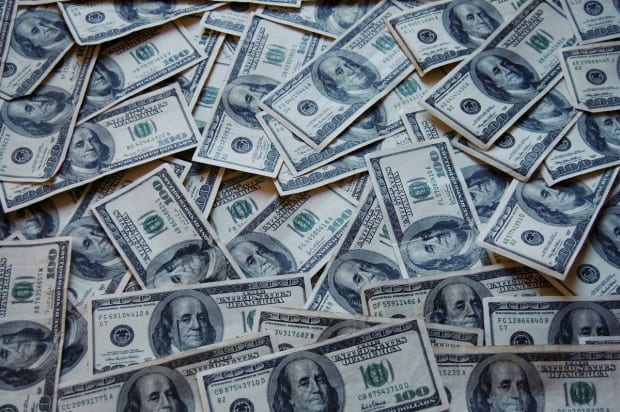7 quick steps to pick the best dividend stocks

As investors, we all love dividends. Other than the thrill of seeing a stock you own rise higher and higher in the stock market, receiving passive dividend income from your investments every year is something we all look forward to.
So if you’re more of an income investor and looking to invest for dividends, your stock portfolio will be markedly different from someone who’s investing for high growth and capital gain. The stocks that will give good, consistent dividends may not necessarily be the kind that will grow by 20-50% a year and vice versa.
So if you investing for dividends, you have to invest accordingly and only pick the best dividend stocks that will give you the dividend income you want.
The question is: How?
If you’re slightly lost and looking for some direction, here are 7 quick steps to help you pick the best dividend stocks around: (Hint: You can’t just look at dividend yield alone!)
1. Look for mid to large cap stocks

The best dividend stocks are usually large, mature companies with stable revenue, profits and cash flow. These companies have little growth left in them. Because these companies are no longer expanding aggressively, the majority of their earnings can be returned to shareholders as dividends.
On the other hand, a smaller, high-growth company needs more cash and resources to grow and expand its business, leaving less money to pay shareholders dividends (if any).
2. Dividend payout ratio is 50% or more

If a company is large, stable and isn’t seeking to grow aggressively any more, then the majority of the profits it makes should be returned to shareholders. So look for a company with a dividend payout ratio of at least 50% or more. For example, Nestlé (Malaysia) returns over 90% of its earnings to shareholders as dividends.
If a company has a low payout ratio, ask yourself why the company is holding on to the cash. Unless they have a good reason to do so or have a way to generate exceptional returns for shareholders, the majority of profits should be paid out as dividends.
3. Track record of consistent dividends

The company should have a long and stable track record of paying consistent/growing dividends to shareholders. No point if a company is large and successful and has profits to distribute as dividends, but chooses to pay them out inconsistently.
Check to see a company pay a consistently growing dividend over the last 5-10 years. This shows that as the company grows more and more successful, the management is also willing to share the fruits of its labour with its shareholders.
4. Company’s fundamentals are sustainable

Many dividend investors tend to ignore the overall aspects of a company’s fundamentals. They choose to focus primarily on the amount of dividends they can receive. This is wrong. While dividend yield is obviously important for someone seeking dividends, it is also important to consider the overall health of the company.
A company with deteriorating fundamentals (e.g. falling revenue, profits, cash flow, fading economic moat, etc.) cannot sustain its dividend payout in the long term. The less revenue and profit it makes, the less dividends it can pay.
Over time, a company with falling revenues and profits will see its stock price fall when investors realize that the company is no longer performing. This fall in value will eat into any dividend gains you might have had at the start – leaving you back at square one.
So always make sure the dividend company you want to invest in will remain fundamentally strong and robust for many years to come.
5. Company has low CAPEX

As a dividend investor, you prefer to invest in a company with low capital expenditure (CAPEX). A company with high CAPEX means that it has to continually reinvest its profits in maintaining its business operations, leaving less to distribute as dividends.
For example, airlines have very high CAPEX as they need to continually maintain their aircraft and upgrade them to newer models after a certain amount of years.
So look for a company that’s able to maintain/grow its business with minimal CAPEX.
If you want help, you can always kick start the idea by downloading our watchlist of dividend paying stocks below:
6. Company has stable free cash flow

Ultimately, a company must have real cash (not just profits) to be able to pay dividends to its shareholders. Even if a company is profitable but has negative or inconsistent free cash flow, it will have trouble paying stable dividends.
A smaller company that is seeking to grow might have negative free cash flow as it expands its business. But a large, stable company that dominates its industry should be producing high amounts of free cash flow year after year.
7. Yield must beat risk-free rate

The dividend yield you receive should beat the risk-free rate of the country you reside in. The risk-free rate is the lowest return you can theoretically get “risk-free”over a period of time.
In the US, if you plan to invest your money for ten years, then the risk-free rate is usually based on the return of the 10-year US Treasury note which is currently around 2.30%. In Singapore, the risk-free rate is usually based on the interest your CPF special account gives you, which is 4%.
If your dividend yield can’t beat your risk-free rate, you might as well put your money with your CPF since you face less risk growing your money there compared to investing in stocks.
The fifth perspective
There you have it! Seven quick steps to help you pick the best dividend stocks to invest in. As you can see, there are lots more items to consider other than just dividend yield!
So remember to check these seven criteria whenever you’re looking to invest for dividends.




nice share victor. especially the last point which i had no knowledge of it. maybe the next post could be types of investor
Thanks Jaron! Glad you found the article useful 🙂
Hi Victor,
Thank you for your summary on identify genuine dividend counters.
I clicked on the link on ‘5 Safe High-Yield Stocks in Singapore’ & entered my email to subscribe for the report. However, after a few days, I still have not received any email on how to download the report.
Wonder what is the link on your website to download ‘5 Safe High-Yield Stocks in Singapore’?
Thank you
David
Hi David,
Thanks for your interest! We sent you another email with the link to download the report. Sometimes, emails may end up in your junk folder, so you might have to check that too 🙂
“In Singapore, the risk-free rate is usually based on the interest your CPF special account gives you which is 4%.”
Shouldn’t the RFR be SG Govt 10yr bond rate (aka MASB10Y), which is currently 2.26% [http://www.tradingeconomics.com/bonds]?
CPF contributions are highly regulated, with mandatory contributions & voluntary top-ups subject to quantitative ceiling threshold. The subject of CPF contributions has quite a maze of rules in itself. Best thing is to plough through CPF website.
Buying SG Govt bond, on the other hand, is not hampered by quantitative threshold, and offers ease of participation.
I believe SG RFR would be overstated if CPF SA interest rate of 4% is used. At least this is what I think.
Hi Anon,
You’re absolutely right. Using your CPF to generate returns isn’t as straightforward as buying a bond and there are many regulations to contend with.
I used the 4% interest rate of the CPF special account because it’s a more conservative figure and it is technically risk-free after all. But you can also most certainly use the 10-year bond interest rate as your risk-free as well 🙂
Dear Sir/Mdm,
Thank you very much.
I got your email.
Best Rgds
David
You’re most welcome, David! 🙂
Hi Victor, is investing for dividend easier? I bought your book recently but the numbers are making me confused.
Hi Chrissie,
Investing for dividends is generally simpler as the stocks you pick are usually mature, stable companies with a good track record of paying dividends.
I will like to congratulate you for taking the first step in empowering yourself with financial & investment knowledge.
Learning anything new is the same as learning how to add 1+1 as a child. It may appear difficult and new initially, but as time goes by, it gets easier.
Hence, it is the same when you look at the numbers in an annual report; if you keep on practicing, it will get easier and more familiar as time passes.
On a side note, thank you for being such a regular reader of The Fifth Person! Continuous support like yours motivates us to do our best in what we do. So keep those questions coming! We’re more than happy to help 🙂
Pls email me for all reports as I am keen to read your articles.
Thank you for the insights.
You’re most welcome, Henry!
Hi Victor, tks for the informative write-ups..
Rgds Dilip
Great read!
your guidance is very useful to retirees like myself. I would certainly like to subscribe to your regular newsletter etc. please include me in your list of subscribers
Sure, we’ve added you to our newsletter where you’ll receive our latest articles and more!
may i know what is devident ?
Hi Zaman,
A dividend is part of the profit a business earns that it pays to shareholders.
For example, if a company makes $1 million in profit this year, it can decide to distribute half of its profits ($500,000). If there are 1 million outstanding shares, then each share you own will receive 50 cents in dividends.
Hi. May I know the list of dividend that all Malaysian investors should have?
Hi Evan,
Please email us and we’ll send the download to you 🙂
Hi,
After reading various articles from your website, I can gain abit of knowledge of how you analyse stocks. But I am abit skeptical of how companies manipulate their earnings.
Do you have any guides on how companies cook their books, in order to distinguish a good and bad company?
thank you
Hi Nicholas, there are several areas to look out for in financial reports to detect any manipulation:
1) A company’s net profits should more or less match its operating cash flow (OCF). This shows a company’s ability to convert their accrued earnings into cold cash. If a company has accelerating net profits, see if its OCF is moving at pace with its net profits growth. Net profits can be manipulated but the inflow and outflow of cash are hard to manipulate.
2) Make sure a company’s intangibles does not comprise a significant portion of its assets. Intangibles include a company’s brand equity, patents, IP rights. They are subjective and hard to value. Hence, they have historically been abused by “bad” companies to inflate the value of its assets.
Another intangible asset is “goodwill”, which is separate from “Intangibles” in a company’s balance sheet. So to calculate a company’s total intangibles, include goodwill as well.
3) Look out for any changes in how a company presents its financial statements and its reasons given for them. Because companies may change how it presents and calculates its financials to boost figures.
For example, to boost earnings, companies can change the method in which it depreciates an asset. Doing so decreases the rate of depreciation of the asset, increasing earnings.
Another example is how a firm changes its provision for doubtful accounts. Provision for doubtful accounts happens when a company is unable to collect “bad debt” from customers who aren’t creditworthy. Provision for doubtful accounts should rise in pace with accounts receivables. If it doesn’t, it means the company now has more creditworthy customers which may not necessarily be the case. If it declines, then alarm bells should ring. Not writing off bad debt allows a company to overstate earnings.
There are more. Here is the url to a book called “The five rules of successful stock investing” by one of Morningstar’s directors: https://voiceofamritsar.com/Reports/1544694488_3343_annual_report.pdf. In chapter 8 of the book on financial fakery, the author explains with examples more red flags to look out for in a company’s annual report.
Hi, Victor,
Thanks for your kindness in explaining every question in details,especially how Companies manipulate their accounts in certain areas to shareholders. As a layman, I have learnt a lot from your explanation. Thanks, Victor.
Hi Jimmy,
Glad that you learnt something from FifthPerson.com and thank you for your kind words. 🙂
Hi Victor,
I am new to investing. When reviewing the Singapore REITS Data there is Price to Book and NAV.
How do I interpret these ?
Rosalind
Hi Rosalind,
Thanks for asking! NAV refers to net asset value — the value of a REIT’s total assets less all liabilities. Price-to-book compares the REIT’s unit price versus its NAV (book value) per unit. For example, if a REIT’s unit price is $1.50 and its NAV per unit is $1.00, then its P/B is 1.5. Hope this explains!